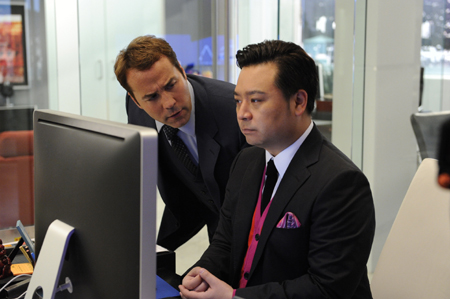This past October, I was invited to lead a workshop on blogging for undergraduates at the Southeast Regional Conference of Asian American Leaders (SERCAAL) conference. I had just finished my first workshop rotation and was heading to the next room when I heard, “Ahn young!”
I looked up to see a young Asian American student smiling at me and I holla back with an “Ahn young!” of my own. She then held up her keychain which was a mass of metal trinkets each with the face of a pretty Korean girl emblazoned on the front. I figured they were a music group, but not having had cable in over 3 years meant I was severely out of the loop on the Korean pop cultural front.
“Who are they?”
“So Nyuh Shi Dae.”
[Insert sounds of crickets chirping]
“They’re also called Girls’ Generation,” she continued.
[More crickets]
The white girl from Georgia standing next to me (visiting the conference with her Asian American sorority sisters) chimes in, “Wow…You’re not that Korean, are you?”
Damn. I wasn’t prepared for this grilling. But my new Asian American friend seemed so bubbly and outgoing, that I just let it slide. I’ll admit it. I had no clue that there was a 9-member girl supergroup called Girls’ Generation. Perhaps it’s because I’ve instituted a new rule that I cannot listen to artists who I could have babysat at one point.
I ran into her later in the conference hall where she called me over to sit next to her. She asked me about my blogging and told me that she ran a website as well. She opened up her laptop and brought up one seriously legit-looking website. The same girls dangling from her keychain had their glossy images popping up on screen with mod fonts and features. My jaw dropped and I asked her if she had designed the site herself.
“I have my people do it.”
By people, she means the staff she oversees on her website Soshified, “home to the largest international fanbase” of Girls’ Generation, which includes 10 moderators, a co-admin, and a graphic designer. She casually dropped that her site receives upon hundreds of thousands of hits per day from diehard fans of the Kpop girl group. She’s appeared in Korean media and gets asked for autographs by Soshified followers. She’s also just in her first year of college.
During a break in the conference schedule we hopped into my economy rental car (a Kia Rio, naturally) to kill some time. It was interesting talking with an Asian American who, though not Korean by ethnicity, had such a genuine love and respect for the culture and had turned that love into a bonafide transnational phenomenon. And shoot, if she thought I was a cool Korean, she must truly be culturally open-minded.
For me as a Korean American who has spent all her days in the United States, it was a tiny glimpse into how influential Korean pop culture is and how it transcends nationality, ethnicity, and race. I still couldn’t pick any of these artists out of a line-up (well, I do know BoA is at least), but nevertheless I can appreciate their impact on a broader level.
My new friend, known by the online alias of Soy to her legions of website members, calls me “unni” (and she should considering I am almost a decade older than she), which I dig. Though, we got into an arm-twisting, shoving match at the counter of a frozen yogurt shop over who would pay for dessert. She beat me and slipped her card to the cashier before I could. I let a dongseng pay for me. Unni, FAIL.
Sylvie Kim is the Film Editor at Hyphen magazine, runs a blog called The Antisocial Ladder, and is on year one of her “professional student” career plan.









